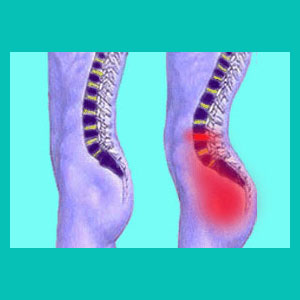
Have you suffered a herniated disc relapse just when you thought you were getting better? Many patients suffer recurrences of herniated disc pain throughout their lives for one reason or another. Worse still, the structural presentation of a herniated disc often recurs following “successful” disc surgery.
Why does herniated disc pain tend to come back to torment patients year after year? Why do herniated discs flare-up at the least opportune times in life? How can you be free from the pain of a herniated disc forever, without suffering periodic relapses that can be debilitating? These are all excellent questions that will be answered in the course of this dialog.
This essay investigates the frequent occurrence of herniated disc relapse in both symptomatic and structural presentations. We will examine why relapses occur and how they can be stopped in many patients.
Structural Herniated Disc Relapse
Some herniated discs will resolve organically, while others may ameliorate through the use of nonsurgical spinal decompression or various forms of herniated disc surgery, including IDET, nucleoplasty and discectomy. Subsequent CT or MRI scans will show the disc structure to be normal following treatment or the simple passage of time. However, at some future point, the disc will reherniate, often worse then the first time. This is what is meant by structural herniated disc relapse.
It is vital to understand that just because the structure of a disc herniates again does not mean that symptoms will appear. Most herniated discs tend to be asymptomatic, including both initial and relapse presentations. However, if a disc was initially blamed for causing pain, regardless of whether the diagnosis was correct or not, recurrences tend to also produce pain due to true pathology, nocebo effect or other explanation.
Disc surgery is the most common identifiable risk factor for reherniation, since all procedures degrade the structural integrity of the annulus fibrosus and therefore make the disc susceptible to additional bulging or rupture following recovery.
Herniated Disc Pain Returns
Symptomatic expressions of herniated discs tend to flare-up periodically in diagnosed patients who are symptomatic, even when the structure of the disc does not change for the better or the worse. The most logical explanation for this occurrence is misdiagnosis, since symptoms should be static if the disc condition remains static and this rarely occurs. However, even when the diagnosis is correct and the disc was initially symptomatic and then stops creating pain, it is likely to present pain at some future time again based on virtually all research statistics.
Herniated discs tend to flare-up and ameliorate cyclically over many years time, once again casting doubt on the structural explanation of pain. Why this occurs in true disc pathologies is open to speculation, but no answer will universally account for all case profiles. Why this occurs in patients who have been misdiagnosed, and are actually suffering form some other type of back or neck pain, is much easier to answer, since the structural state of the disc is a nonissue to the symptomatic presentation.
Ending the Herniated Disc Relapse Nightmare
Ending herniated disc symptoms is not as difficult as it may first seem to be. It often simply takes utilizing a different approach to diagnosis and care. You should start by learning the true and indisputable facts about herniated discs in order to fully recover. Here are our recommendations, based on the many lifetimes of clinical experience of our editorial board:
First and foremost, never forget that most herniated discs are not symptomatic, despite what you might have been told by a clueless or opportunistic care provider. Unless the disc is verifiably compressing or chemically irritating the spinal cord or spinal nerves, it should be not painful. Therefore, our first action tip is to make sure that your diagnosis is correct if your herniated disc has been blamed for causing your back or neck pain. When herniated discs are symptomatic, they much more often produce pain, tingling, weakness and numbness in the limbs, rather than the back or neck.
If your disc is pathological and requires treatment, consider trying nonsurgical spinal decompression. The therapy is effective for contained herniated discs and will not inherently damage the disc like surgical intervention will.
If the disc is pathological and requires surgery, make sure to carefully shop for a doctor who is experienced in the least invasive approaches to care and avoid spinal fusion at all costs. Discectomy fails more often than IDET and nucleoplasty, and disc replacement and spinal fusion add additional elements of risk and the potential for much more common and dire complications, so choose the least invasive treatment option that will successfully resolve the disc concern. Remember that disc surgery is much more effective for limb pain than for back pain.
No matter which category you fit into, include knowledge therapy in your treatment routine. In most cases, this approach to care is all you will need to end back pain forever. However, in other rare cases, some type of medical treatment is required to end structural issues that are responsible for sourcing symptoms. Either way, knowledge therapy will provide the tools you need to get past the nocebo effect of diagnosis and treatment and recuperate 100%.
Herniated Disc > My Herniated Disc Story > Herniated Disc Relapse





